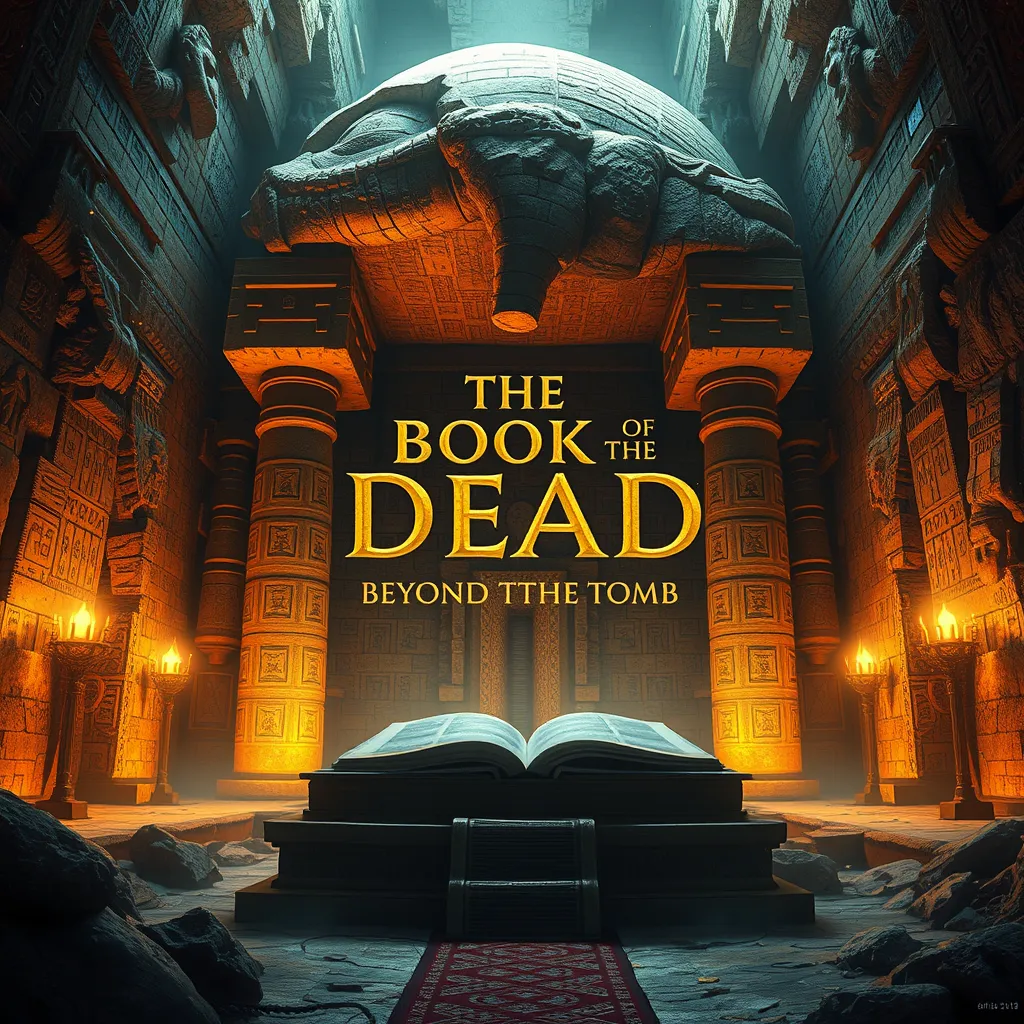The Book of the Dead: Beyond the Tomb
I. Introduction
The Book of the Dead, an ancient Egyptian funerary text, serves as a crucial element in the understanding of the afterlife beliefs and practices of one of history’s most fascinating civilizations. Compiled over many centuries, this collection of spells and rituals was designed to guide the deceased through the challenges of the afterlife, ensuring a safe passage and a favorable judgment by the gods.
Significant in ancient Egyptian culture, the Book of the Dead not only reflects the spiritual and religious beliefs of the time but also highlights the intricate relationship between life and death, the divine, and the human experience. This article aims to explore broader implications of the Book of the Dead beyond its funerary practices, delving into its historical context, theological significance, and lasting impact on modern culture.
II. Historical Context of the Book of the Dead
The origins of the Book of the Dead can be traced back to the Pyramid Texts and Coffin Texts, which were earlier funerary writings that aimed to assist the deceased in their journey to the afterlife. Over time, these texts evolved into the more accessible Book of the Dead, which became widely used from the New Kingdom period (c. 1550-1070 BCE) onward.
Key historical periods influenced the content and structure of the Book of the Dead, including:
- The Old Kingdom: Development of early funerary rituals.
- The Middle Kingdom: Expansion of religious beliefs and the introduction of new spells.
- The New Kingdom: Standardization and widespread use of the Book of the Dead among the elite.
Compared to other ancient funerary texts, such as the Tibetan Book of the Dead and the Greek Orphic hymns, the Egyptian text is unique in its focus on judgment and the moral consequences of one’s actions in life.
III. Structure and Content of the Book of the Dead
The Book of the Dead is comprised of 192 spells, though not all versions contain the same spells. These spells are divided into various chapters that address different aspects of the afterlife journey. Key chapters include:
- Spell 125: The Weighing of the Heart.
- Spell 1: The Opening of the Mouth.
- Spell 30B: The Negative Confessions.
Throughout the text, symbols and illustrations play a crucial role in conveying the message and enhancing the spells’ meanings. For instance, the heart is often depicted as the seat of the soul, while the feather of Ma’at symbolizes truth and justice, which are pivotal during the judgment of the deceased.
The Book of the Dead serves as a guide, providing the deceased with instructions and spells to navigate the afterlife, confront challenges, and ultimately achieve eternal life.
IV. Theological and Spiritual Significance
In ancient Egyptian belief, the afterlife was seen as a continuation of life on Earth, with the afterworld being a realm of both reward and punishment. The Book of the Dead encapsulates these beliefs, emphasizing the importance of moral conduct during one’s lifetime.
The gods and goddesses play a vital role within the text, with deities such as Osiris, Anubis, and Ma’at being central figures in the process of judgment and the afterlife journey. Each deity has specific functions, from guiding the soul to weighing its heart against Ma’at’s feather.
The impact of the Book of the Dead on spiritual practices is profound, influencing rituals related to death, burial, and offerings, as well as shaping the moral framework of ancient Egyptian society.
V. The Book of the Dead in Modern Interpretation
Archaeological discoveries over the past century have unveiled numerous papyrus scrolls and artifacts containing various versions of the Book of the Dead, enriching our understanding of ancient Egyptian beliefs and practices. These discoveries have not only provided insight into funerary customs but also revealed the complexity and diversity of religious thought in ancient Egypt.
The influence of the Book of the Dead extends into contemporary literature and art, inspiring countless works that explore themes of death, the afterlife, and morality. However, misconceptions and media representations often oversimplify or sensationalize the text, leading to a distorted perception of its true significance.
VI. The Book of the Dead and Cultural Identity
The Book of the Dead played a crucial role in shaping ancient Egyptian identity, intertwining with rituals and daily life. It was not merely a set of spells but a reflection of the values and beliefs that defined the civilization.
Connection to rituals and everyday life is evident in the manner in which the text was integrated into funerary practices. Burials were often accompanied by the Book of the Dead, ensuring that the deceased would have the necessary guidance in the afterlife.
The legacy of the Book of the Dead continues in modern Egyptian culture, where elements of its teachings still resonate in various spiritual practices and cultural expressions.
VII. The Book of the Dead: A Global Perspective
When considering the Book of the Dead in a global context, it is essential to compare it with other cultures’ texts on the afterlife. For instance, the Tibetan Book of the Dead offers a different perspective on death and rebirth, while the Epic of Gilgamesh provides insights into Mesopotamian views on mortality.
The influence of the Book of the Dead extends beyond Egypt, impacting global religious and philosophical systems. Its themes of judgment and moral conduct echo in various belief systems, demonstrating a universal quest for understanding mortality.
VIII. Conclusion
In recap, the Book of the Dead stands as a significant artifact of ancient Egyptian civilization, encapsulating its beliefs about life, death, and the afterlife. Its lasting impacts on history, culture, and spirituality continue to be felt today, inviting modern audiences to explore and appreciate the ancient wisdom it imparts.
As we delve deeper into the mysteries of the Book of the Dead, we are reminded of our shared humanity and the timeless questions that surround existence and the afterlife.




